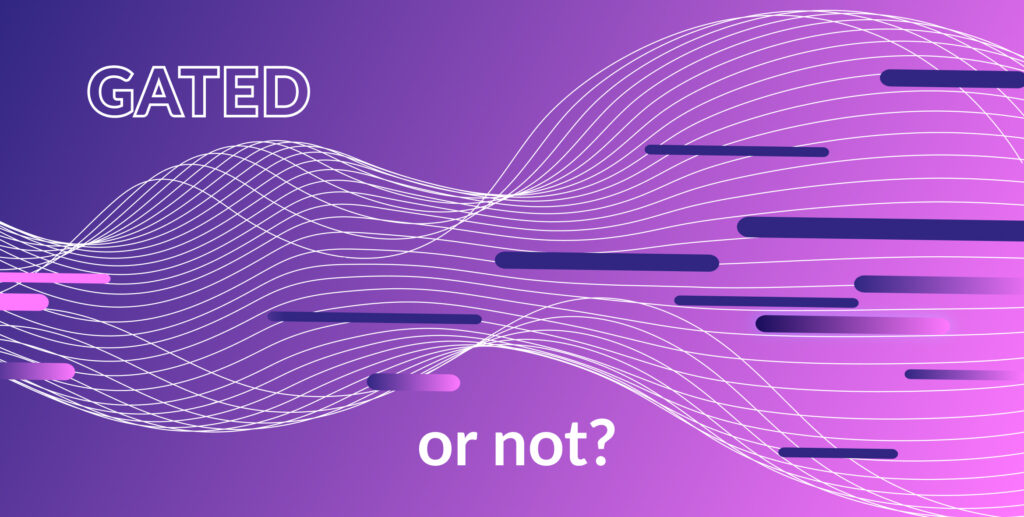Intense competition means that coming up with standout content ideas for cybersecurity businesses is a constant challenge. Whether your goal is to rank on the first page of Google for your keywords, or provide sales teams with content to engage prospects, you need a well-defined cybersecurity content strategy.
Let’s assume that you already have a content marketing plan (if you don’t, click the link for a handy content strategy playbook). Before you start, ensure you familiarise yourself once again with your marketing goals and audience (here’s how to create a B2B customer profile) – especially their roles in the purchase process and key pain points.
Your audiences are most likely to visit your website to answer a specific information search need. If your blog topic addresses that need, they will read through it – and what happens next?
That’s where your content marketing strategy comes into play. If you provide a path for your readers to go deeper into your content – a coherent, diverse, content journey that offer values through the information search phase – they will stay longer on your website and engage more deeply with your offer and point of view.
And Isoline’s first law of content marketing states: ‘The longer your audience engages with your content, the higher the probability of them engaging with your sales teams.’
So here are some strategies you can adopt to create engaging content that have made an impact for cybersecurity businesses.
Educate your audience
In tech B2B, marketing and education go hand in hand. Whether your solution addresses telecoms, payments, onboarding, or IoT fraud, change is a constant. Fraudsters consistently evolve their attack methods and targets to bypass evolving security technologies. In-house security teams are hard pressed to keep pace and they are always looking for best practice to keep abreast of anti-fraud measures.
Why not create a content series that addresses exactly this pain point? It’s got the added advantage of being exactly the type of top-of-funnel content that your potential customers are looking for.
For example, let’s say you’re promoting a cloud platform that prevents authentication fraud among small e-tailers. You could create a mini-blog or video series with a content cadence that looks like this:
- What is the impact of PSD2 on my business if fraud hits?
- How can I protect customers from social engineering fraud?
- What are the new fraud types that my competitors are being hit with in 2024?
- And so on
This approach will position you as a trusted source that your audiences will turn to when they want an update on the state of the market.
Top tip: Remember to keep your content useful for the information search phase and informative and resist the temptation to ‘close the sale’ in each piece!
Offer insight into your customers’ customers
Providing insight into tech concepts and industry trends is useful but carries the disadvantage that any of your competitors could do it as well. Another key area of interest for your customers is their own customers: address that by offering in-depth, first-party data about them.
Going back to our small e-tailer example – you could conduct an online survey on how customers feel about being hit with fraud which shopping online, and how much friction they are willing to accept in return for a more secure environment. Other ways to provide this could include, a named or anonymous case study, a focus group, or even with anonymised data from your systems.
Offering this content, packaged up with unique technical insights from company experts, could be a great way to initiate and progress conversations with prospects. You could think about repeating the survey every year to provide a barometer of consumer attitudes over time.
HomeByMe’s home and kitchen customer survey is a great example of this approach.
Added bonus: this type of content can be atomised and is golden for social media as well.
Incorporate interactivity into your content

This photo, long used in UX planning for stores, apps, and websites, perfectly illustrates the benefit of interactive content. People do not always absorb information in a neat, linear form.
Interactive content is highly engaging and allows your customers to chart their own route through the knowledge you’re providing. It’s like providing multiple routes for your readers, like the photo below:

There are numerous advantages to this approach. Users can simply move to what they are most interested in. Maybe their priority is to review a chart that compares the features of your offer against your competitors, or that evergreen favourite: the case study. Providing interactivity and multiple routes through your content means they don’t have to follow your route. They can follow what’s intuitive for them.
The good news is that interactivity is not that huge, lumbering beast it used to be even a year ago. New platforms from Genially to Turtl to Foleon allow you to incorporate interactive elements easily to create a variety of assets. Build diversity into your content mix with ideas like client testimonials collected through a platform like Vocal Video to quick animated Canva slideshows.
Here’s a blog on on the types of content that can add value at different parts of the funnel.
Tip: When you’re creating interactive assets, make sure you spend enough time planning a range of paths through your content.
Increase the effectiveness of your cybersecurity content
So in conclusion – you can’t just write content in an ad-hoc manner if you want results.
To achieve your goals, content needs to be backed by a plan, insights into the pain points of your audiences, and – perhaps most of all – patience. Use every asset to learn and understand what works for your audience, and what doesn’t.
One thing is for certain – content created without a plan in place leads to wasted effort, time, and money.
Do you have a cybersecurity content strategy in place? If so, how good is it? Do you want to run it past our experts? Get in touch: hello@isolinecomms.com.

Like what you just read?
There’s more where that came from. Sign up to our newsletter to get the latest B2B tech news, content marketing insights, tips, tricks, memes, and more, delivered straight into your inbox every month.



